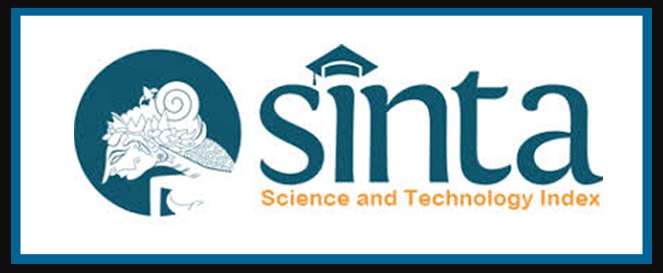Benchmarking In Microcontroller Development Board Power Consumption For Low Power Iot Wsn Application
Abstract
Keywords
Full Text:
PDFReferences
ITU-T, “Recommendation ITU-T Y.2221: Requirements for Support of Ubiquitous Sensor Network (USN) Applications and Services in the NGN Environment.” p. 32, 2010, [Online]. Available: https://www.itu.int/rec/T-REC-Y.2221/en.
N. Sharmin, A. Karmaker, W. L. Lambert, M. S. Alam, and M. S. T. S. A. Shawkat, “Minimizing the energy hole problem in wireless sensor networks: A wedge merging approach,” Sensors (Switzerland), 2020, doi: 10.3390/s20010277.
J. Chen, S. Li, S. H. G. Chan, and J. He, “WIANI: Wireless infrastructure and Ad-hoc network integration,” IEEE International Conference on Communications, 2005, doi: 10.1109/icc.2005.1495092.
T. C. Hung and H. H. Trung, “Energy savings in applications for wireless sensor networks time critical requirements,” International Journal of Computer Networks and Communications, vol. 8, no. 4, pp. 47–58, 2016, doi: 10.5121/ijcnc.2016.8403.
M. T. Penella, J. Albesa, and M. Gasulla, “Powering wireless sensor nodes: Primary batteries versus energy harvesting,” 2009 IEEE Intrumentation and Measurement Technology Conference, I2MTC 2009, 2009, doi: 10.1109/IMTC.2009.5168715.
Y. Ru, J. Kleissl, and S. Martinez, “Storage size determination for grid-connected photovoltaic systems,” IEEE Transactions on Sustainable Energy, 2013, doi: 10.1109/TSTE.2012.2199339.
X. Liu and J. Wu, “A method for energy balance and data transmission optimal routing in wireless sensor networks,” Sensors (Switzerland), vol. 19, no. 13, pp. 1–14, 2019, doi: 10.3390/s19133017.
S. Budiyanto, G. P. N. Hakim, D. Septiyana, and A. Firdausi, “Soil Micro Energy Harvester for IoT-WSN Application,” Technology Reports of Kansai University, vol. 62, no. 5, pp. 45–50, 2020.
Y. Li, X. Li, and P. Wang, “A module harvesting wind and solar energy for wireless sensor node,” Communications in Computer and Information Science, 2013, doi: 10.1007/978-3-642-36252-1_20.
Mulyadi and R. W. Arsianti, “Low Power Electrical Generator from Soil Microbial Fuel Cell,” 2018 Electrical Power, Electronics, Communications, Controls and Informatics Seminar, EECCIS 2018, 2018, doi: 10.1109/EECCIS.2018.8692948.
Y. Y. Choo and J. Dayou, “A Method to Harvest Electrical Energy from Living Plants,” Journal of Science and Technology, 2013, doi: 10.1109/19.387319.
I. Aramendia, U. Fernandez-Gamiz, E. Z. Guerrero, J. M. Lopez-Guede, and J. Sancho, “Power control optimization of an underwater piezoelectric energy harvester,” Applied Sciences (Switzerland), 2018, doi: 10.3390/app8030389.
A. Wahab, F. A. Mustika, R. B. Bahaweres, D. Setiawan, and M. Alaydrus, “Energy efficiency and loss of transmission data on Wireless Sensor Network with obstacle,” Proceeding of 2016 10th International Conference on Telecommunication Systems Services and Applications, TSSA 2016: Special Issue in Radar Technology, 2017, doi: 10.1109/TSSA.2016.7871084.
L. Mottola and G. Pietro Picco, “MUSTER: Adaptive energy-aware multisink routing in wireless sensor networks,” IEEE Transactions on Mobile Computing, 2011, doi: 10.1109/TMC.2010.250.
G. S. Brar, S. Rani, V. Chopra, R. Malhotra, H. Song, and S. H. Ahmed, “Energy efficient direction-based PDORP routing protocol for WSN,” IEEE Access, 2016, doi: 10.1109/ACCESS.2016.2576475.
R. Bria, A. Wahab, and M. Alaydrus, “Energy Efficiency Analysis of TEEN Routing Protocol with Isolated Nodes,” Proceedings of 2019 4th International Conference on Informatics and Computing, ICIC 2019, 2019, doi: 10.1109/ICIC47613.2019.8985668.
G. Lukachan and M. A. Labrador, “SELAR: Scalable Energy-efficient Location Aided Routing protocol for wireless sensor networks,” Proceedings - Conference on Local Computer Networks, LCN, pp. 694–695, 2004, doi: 10.1109/LCN.2004.111.
P. S. Bhagat, D. V. S. Gulhane, and P. T. S. Rohankar, “Implementation of Internet of Things for Water Quality Monitoring,” International Journal of Trend in Scientific Research and Development, 2019, doi: 10.31142/ijtsrd23655.
S. Aryza, Z. Lubis, P. L. Eh Kan, W. Khairunizam, and Hamdani, “Enhanced of Speed Monitoring Brushless DC (BLDC) Equipment and Controller Based on Arduino,” 2019, doi: 10.1088/1742-6596/1361/1/012049.
Atmel, “ATmega328/P [Datasheet],” AVR Microcontrollers, 2016. .
J. Fat and H. Candra, “Blockchain application in internet of things for securing transaction in ethereum TestNet,” 2020, doi: 10.1088/1757-899X/1007/1/012194.
S. Suraidi and S. Nathania, “Sistem Pengendali Smart-Kontak dengan Aplikasi Android dan Web,” TESLA: Jurnal Teknik Elektro, 2020, doi: 10.24912/tesla.v21i2.7183.
Espressif, “ESP32 Series Datasheet,” Espressif Systems, 2019.
M. Sabiran, D. Triyanto, and Suhardi, “Implementasi Wireless Sensor Network Pada Sistem Pemantauan Dan Pengontrolan Budidaya Tanaman Pada Rumah Kaca (Green House) Berbasis Website,” Jurnal Coding, Sistem Komputer Untan, 2018.
Espressif Systems, “Datasheet ESP8266EX,” 2020.
Espressif Systems, “Datasheet ESP32 Series,” 2019. [Online]. Available: www.espressif.com.
N. S. adah Abdul Halim, R. Abdullah, S. A. Karsani, N. Osman, Q. A. Panhwar, and C. F. Ishak, “Influence of soil amendments on the growth and yield of rice in acidic soil,” Agronomy, 2018, doi: 10.3390/agronomy8090165.
C. J. García-Orellana, M. Macías-Macías, H. M. González-Velasco, A. García-Manso, and R. Gallardo-Caballero, “Low-power and low-cost environmental iot electronic nose using initial action period measurements,” Sensors (Switzerland), 2019, doi: 10.3390/s19143183.
Energizer, “Product Datasheet Energizer E91 Form No. E91NA1018,” 2021.
DOI: http://dx.doi.org/10.22441/jte.2022.v13i1.005
Refbacks
- There are currently no refbacks.
Copyright (c) 2022 Jurnal Teknologi Elektro
Publisher Address:
Teknik Elektro, Fakultas Teknik, Universitas Mercu Buana
Jl. Raya Meruya Selatan, Kembangan, Jakarta 11650
Tlp./Fax: +62215871335
Email: [email protected]
Website of Electrical Engineering
http://teknikelektro.ft.mercubuana.ac.id
p-ISSN : 2086-9479
e-ISSN : 2621-8534
Jurnal URL : http://publikasi.mercubuana.ac.id/index.php/jte
Jurnal DOI: 10.22441/jte

Ciptaan disebarluaskan di bawah Lisensi Creative Commons Atribusi-NonKomersial 4.0 Internasional.







